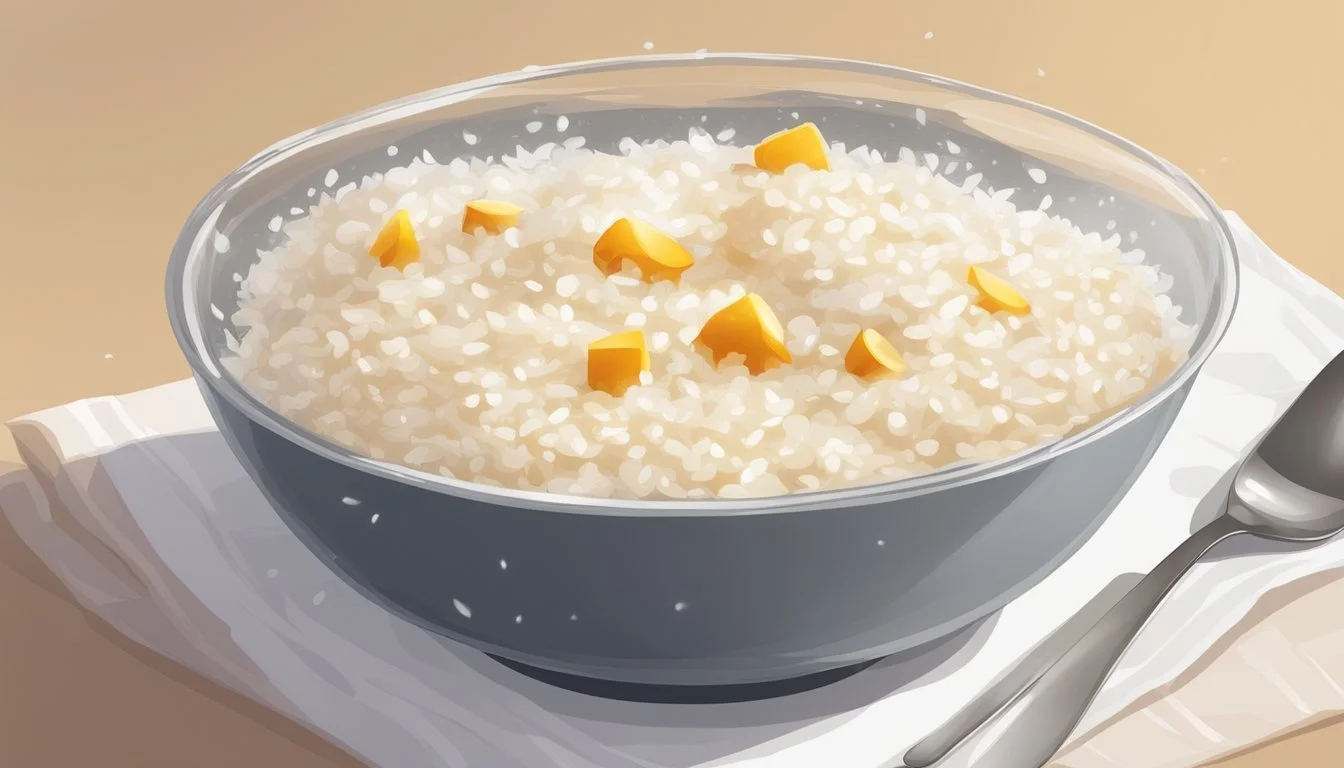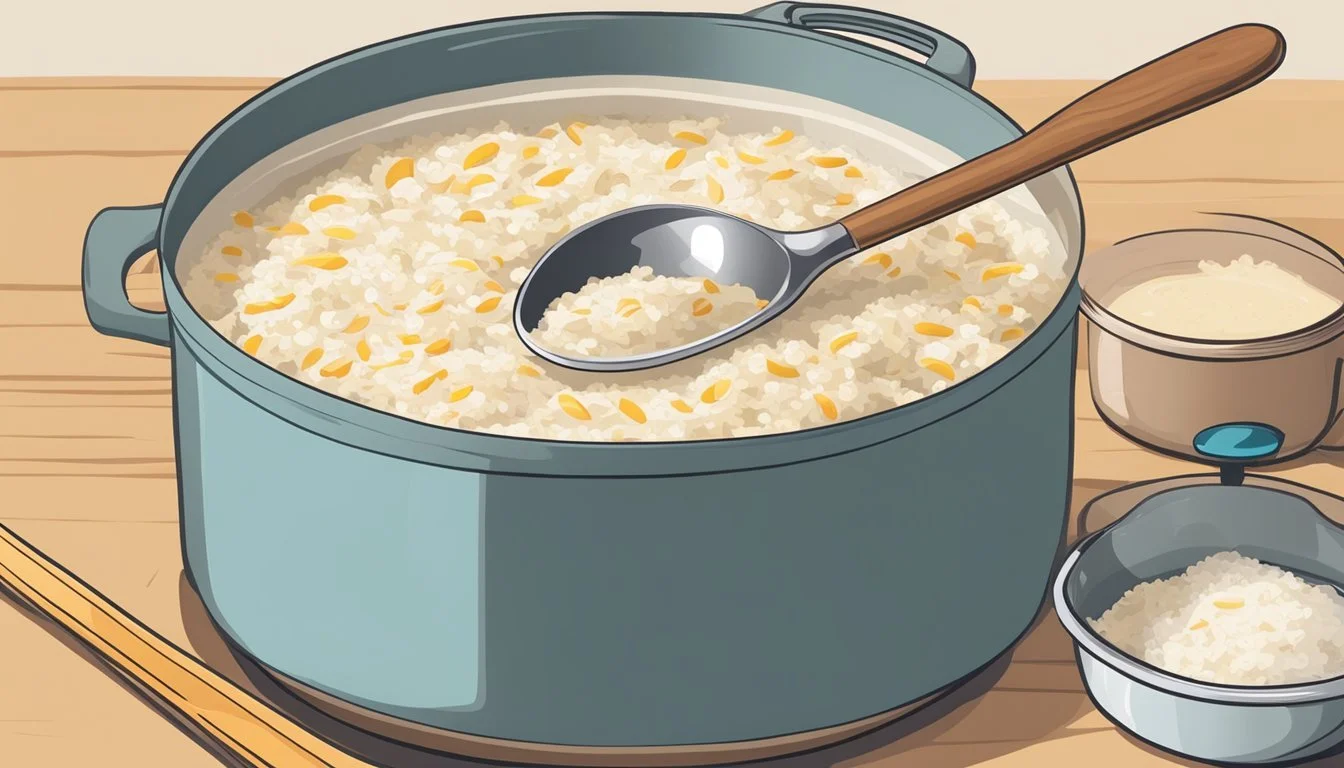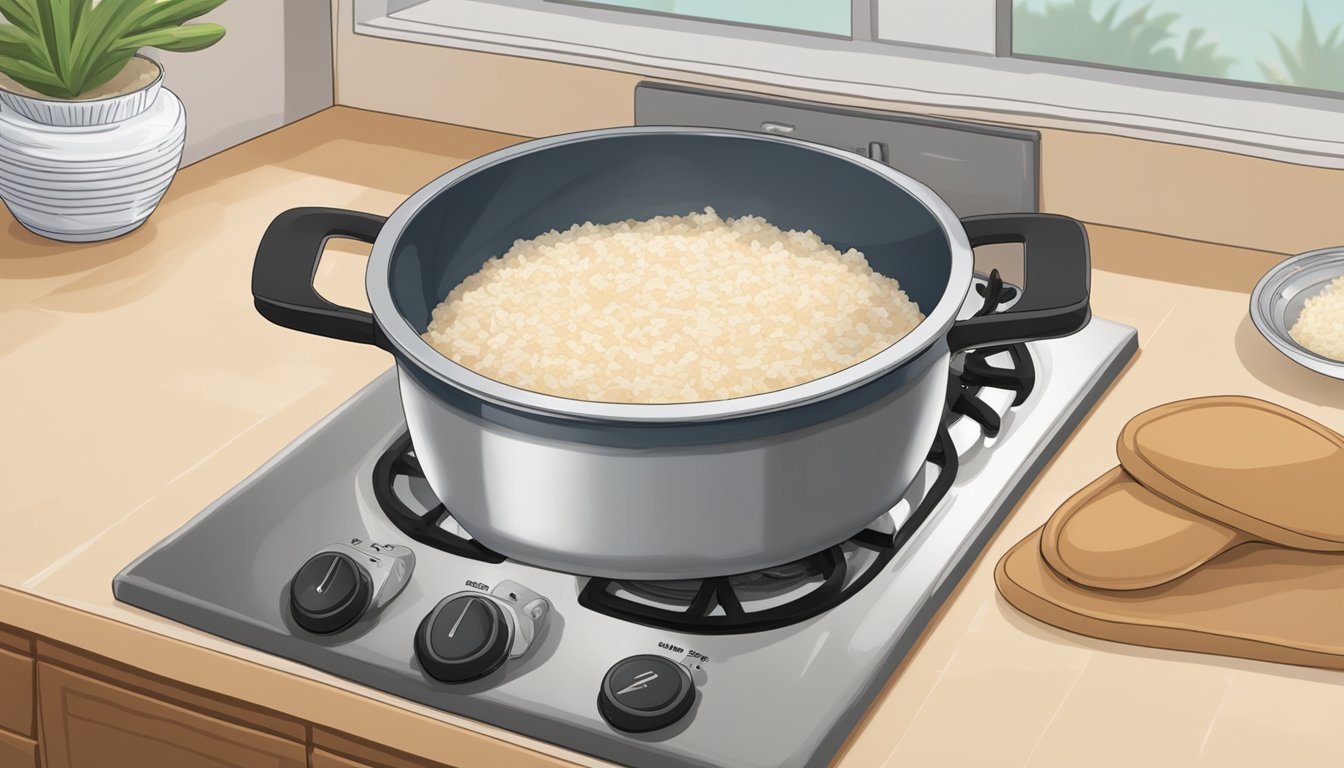How to Reheat Coconut Rice Pudding
Simple Methods and Tips
Coconut rice pudding is a beloved dessert that combines the rich, tropical flavors of coconut with the creamy texture of traditional rice pudding. While freshly made coconut rice pudding is a treat, knowing how to reheat it properly can make all the difference in maintaining its indulgent consistency. To reheat coconut rice pudding, the best method involves adding a splash of coconut milk or water to restore its moisture.
Using a microwave or oven are two effective ways to reheat this dessert. In the microwave, portion out the rice pudding into a microwave-safe dish, add a little liquid, and cover with a damp paper towel. Heating in short intervals of 20-30 seconds and stirring in between ensures even warming and preserves the pudding’s creamy texture. Alternatively, reheating in the oven involves preheating to 350°F (180°C), lightly greasing a baking dish, and spreading the pudding evenly. Adding some milk or cream and covering the dish with foil helps retain moisture.
These methods not only make your leftover coconut rice pudding as delightful as the day it was made but also highlight the versatility of this dessert. As one explores the options for reheating, it’s clear that maintaining the right balance of moisture and heat is key to enjoying coconut rice pudding at its best.
Understanding Coconut Rice Pudding
Coconut rice pudding is a flavorful and creamy dessert made predominantly from rice and coconut milk. This dish can be adapted to various dietary needs and tastes, making it a popular choice worldwide.
Key Ingredients
Coconut rice pudding’s core ingredients include rice, coconut milk, and sugar. Rice provides the base, while coconut milk gives it a rich and creamy texture. Typically, vanilla extract, cinnamon, and coconut flakes are added to enhance the flavor.
For a vegan or dairy-free option, coconut milk is used instead of dairy milk. Almond milk is an alternative for those who prefer a lighter version. Brown sugar can replace white sugar for a deeper molasses flavor. Fruits and nuts such as berries and almonds add texture and additional nutrients.
Traditional vs. Modern Variations
Traditional rice pudding, often made with dairy milk and vanilla extract, differs slightly from coconut rice pudding, which uses coconut milk to achieve a dairy-free and gluten-free version. Traditional rice pudding incorporates spices like cinnamon and sweeteners such as sugar or honey.
Modern variations include the vegan creamy coconut rice pudding, substituting dairy with plant-based milk like almond milk or adding coconut extract for an intensified coconut flavor. Some recipes use different grains such as quinoa or black rice to create unique twists on the classic pudding.
Nutritional Information
Coconut rice pudding can be a nutritious dessert, offering both macronutrients and micronutrients. The primary calories come from the rice and coconut milk. Coconut milk provides healthy fats, particularly medium-chain triglycerides (MCTs), which can be beneficial for metabolism.
For those following a vegan or dairy-free diet, coconut rice pudding is an excellent option. Substituting brown sugar for white sugar can add dietary fiber and a lower glycemic index. Adding nuts or fruit like berries can enhance the dish with vitamins, minerals, and antioxidants, making it not only tasty but also healthy.
By understanding the ingredients, variations, and nutritional benefits, one can appreciate the versatility and richness of coconut rice pudding.
Preparation Before Reheating
Proper storage and preservation techniques are essential to maintain the texture, flavor, and moisture of coconut rice pudding. By following the right methods, one can enjoy a consistent and delicious dessert even after refrigeration or freezing.
Storing Coconut Rice Pudding
Coconut rice pudding should be stored in an airtight container to prevent it from absorbing other odors from the refrigerator. Using airtight containers or freezer bags ensures the pudding retains its moisture and flavor.
For short-term storage, place the pudding in the refrigerator. This will keep it fresh for up to three days. If being stored for longer periods, freezing is advisable. When freezing, ensure the pudding is sufficiently cooled before transferring it to freezer bags or containers.
Labeling the containers with the date helps with keeping track of freshness. This practice ensures you're aware of how long the pudding has been stored, aiding in better consumption decisions.
Tips for Preserving Quality
To retain the creamy texture and rich flavor of the coconut rice pudding, a few preservation tips are crucial. First, when storing, consider adding a light sprinkle of coconut flakes on top before sealing. This helps to lock in both the flavor and moisture.
When reheating, add a splash of coconut milk or water to restore any lost moisture. This step maintains the pudding's creamy consistency. It's also recommended to occasionally stir the pudding while reheating to ensure even heating and to prevent it from sticking to the dish.
Proper storage and reheating techniques can protect the pudding from becoming too dry or losing its texture. These steps help in enjoying a delightful and flavorful coconut rice pudding even after it has been stored.
Reheating Techniques
Reheating coconut rice pudding can be done effectively using different methods to ensure that the texture and flavor remain intact. Each technique—microwave, stovetop, and oven—has its own advantages and specific steps to follow for best results.
Microwave Method
The microwave is a quick and convenient way to reheat coconut rice pudding. Place the pudding in a microwave-safe bowl, ensuring it has some moisture. This can be achieved by adding a small amount of milk or water. Cover the bowl with a microwave-safe lid or plastic wrap to retain steam.
Heat on medium power in 30-second intervals, stirring between each interval to ensure even heating. The pudding should be hot and creamy within 1-2 minutes. Avoid overheating, which can cause the pudding to dry out or become rubbery.
Stovetop Method
Reheating on the stovetop can help in maintaining the creamy texture of coconut rice pudding. Place the pudding in a small pot and add a splash of milk or water to prevent it from drying out.
Set the stove to low heat. Stir the pudding continuously to prevent sticking to the bottom of the pot and to distribute the heat evenly. Reheat for about 5-7 minutes or until it reaches the desired temperature. Consistent stirring is essential to achieving a smooth, creamy consistency.
Oven Method
Using the oven is another effective method, especially for large quantities. Preheat the oven to 350°F (175°C). Transfer the pudding to an oven-safe dish, spreading it evenly. Add some milk or water to help maintain moisture.
Cover the dish with aluminum foil to trap steam, ensuring the pudding heats evenly. Place in the oven for about 15-20 minutes or until thoroughly heated. Stir the pudding midway through the heating process for best results. This method may take longer but helps in achieving a consistent texture.
Best Practices for Even Heating
To ensure even heating and maintain the desired texture and creaminess, follow these tips:
Stir frequently: This is crucial in microwave and stovetop methods to avoid hot spots.
Add moisture: A small amount of milk or water helps to maintain the creamy texture.
Cover the dish: This is particularly important in microwave and oven methods to prevent drying out.
Monitor closely: Reheating times can vary, so watch the pudding carefully to avoid overheating.
By using these techniques, you can enjoy perfectly reheated coconut rice pudding that tastes just as good as when it was freshly made.
Post-Reheat Enhancements
Coconut rice pudding can be elevated with the addition of various toppings and served creatively. These enhancements not only add visual appeal but also elevate the overall taste experience.
Adding Toppings and Flavors
Toppings are a crucial aspect of enhancing coconut rice pudding after reheating. Toasted coconut flakes add a crunch and a rich, nutty flavor. Raisins provide a sweet and chewy contrast, while banana slices bring a creamy texture. Pineapple chunks introduce a tropical tang, balancing the creamy richness of the pudding.
Nuts, such as almonds or cashews, offer a satisfying crunch. Caramel sauce drizzled over the top can lend a deep, sweet flavor. Fresh fruits, like mango chunks or mixed berries, add a burst of freshness and color, making the dessert more appealing.
Serving Suggestions
Serving coconut rice pudding in elegant dishes enhances the dining experience. It can be garnished with a few toasted coconut flakes, and slices of banana on the side. For a more decadent version, a small drizzle of caramel sauce can be added just before serving.
Pairing the pudding with a few pineapple chunks or a handful of mixed berries adds brightness and contrast. For a comforting touch, serve it warm in a ceramic bowl, topped with nuts and a sprinkle of ground cinnamon. These enhancements make each serving of coconut rice pudding irresistible and memorable.
Additional Tips and Tricks
To maximize the quality of your reheated coconut rice pudding, follow these practical tips. This section covers effective ways to prevent food waste, preserve the flavor and texture, and dairy-free alternatives for reheating.
Preventing Food Waste
By properly managing leftovers, you ensure that no delicious coconut rice pudding goes to waste. Refrigerate leftovers within two hours of cooking. Store them in airtight containers to preserve freshness.
Freezing Tips:
Let the rice pudding cool completely.
Transfer to airtight, freezer-safe containers.
Label with the date and freeze. Consume within three months for best quality.
When ready to eat, thaw in the fridge overnight before reheating.
Maintaining Flavor and Texture
Maintaining the creamy texture and rich flavor is essential. When reheating, use a gentle method:
Stovetop Method: Heat pudding in a heavy-bottom pan over medium heat. Add 2-3 tablespoons of milk or cream per serving to restore moisture.
Microwave Method: Use a microwave-safe bowl. Mix in a bit of milk, cover loosely, and heat in short intervals, stirring frequently.
To avoid a grainy texture, never let it boil.
Dairy-Free and Vegan Alternatives
For those who prefer dairy-free or vegan options, coconut rice pudding can be reheated effectively with plant-based milks. Coconut milk maintains a consistent creamy texture. Almond milk is another great alternative that blends well.
Procedure:
Stovetop: Warm the pudding with coconut or almond milk over medium heat.
Microwave: Mix in the milk, cover, and heat in short intervals.
Both methods ensure that the flavor and consistency are preserved without dairy products.
Safety Considerations
To ensure coconut rice pudding remains safe to eat, it's crucial to store it properly and recognize signs of spoilage. This ensures that the dish is safe from food poisoning risks.
Proper Cooling and Storage
After preparing coconut rice pudding, cool it quickly to prevent bacterial growth. Transfer it to a shallow container and refrigerate within two hours. Maintain refrigeration at or below 40°F (4°C).
For storage, use airtight containers to prevent contamination. Consume refrigerated rice pudding within three to four days. Avoid leaving it at room temperature for extended periods. Reheat only the amount you plan to eat to avoid repeated cooling and reheating.
Signs of Spoilage
Before reheating, check for signs of spoilage. Look for visible mold or changes in texture. An off or sour smell indicates bacterial growth, which can lead to food poisoning if consumed.
Ensure the coconut rice pudding is smooth and uniform. Any unusual color changes or separation may signal spoilage. Always err on the side of caution and discard any pudding that shows these signs. This helps prevent illness and ensures food safety.






